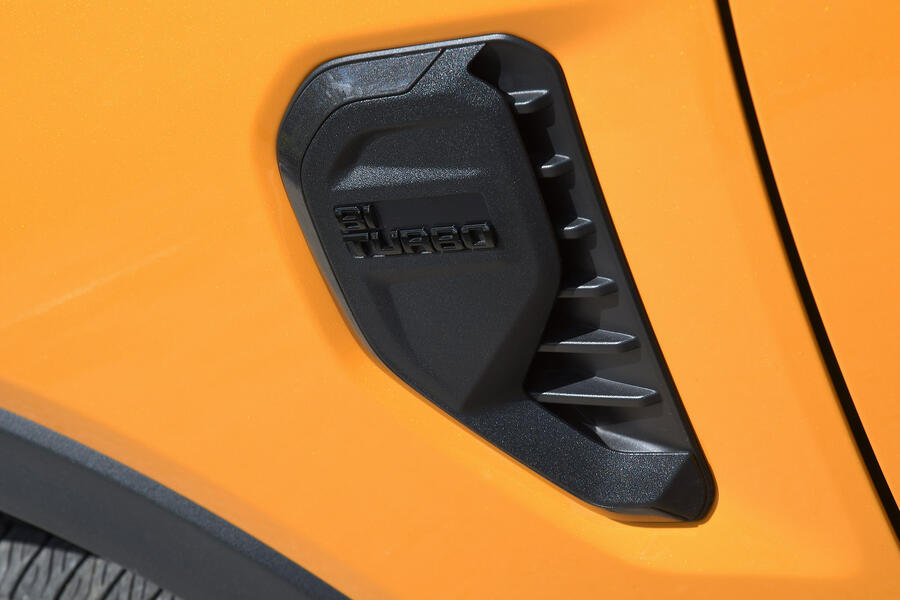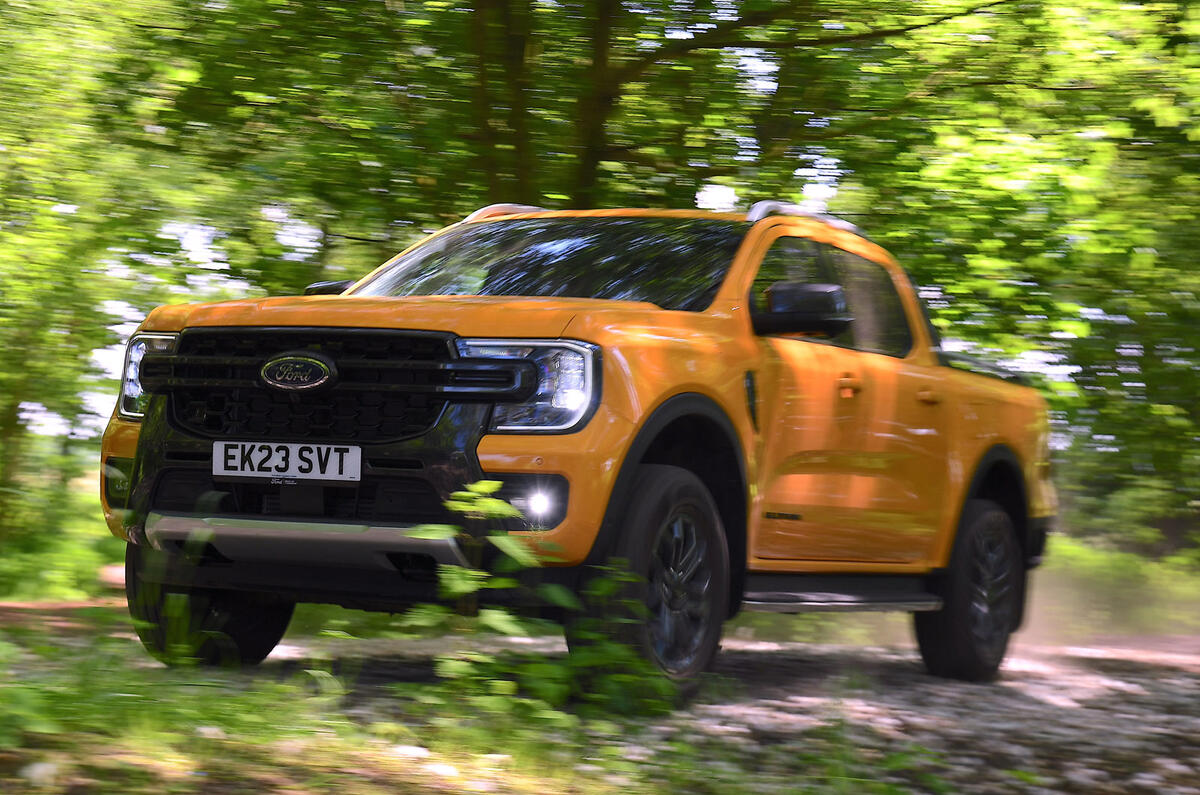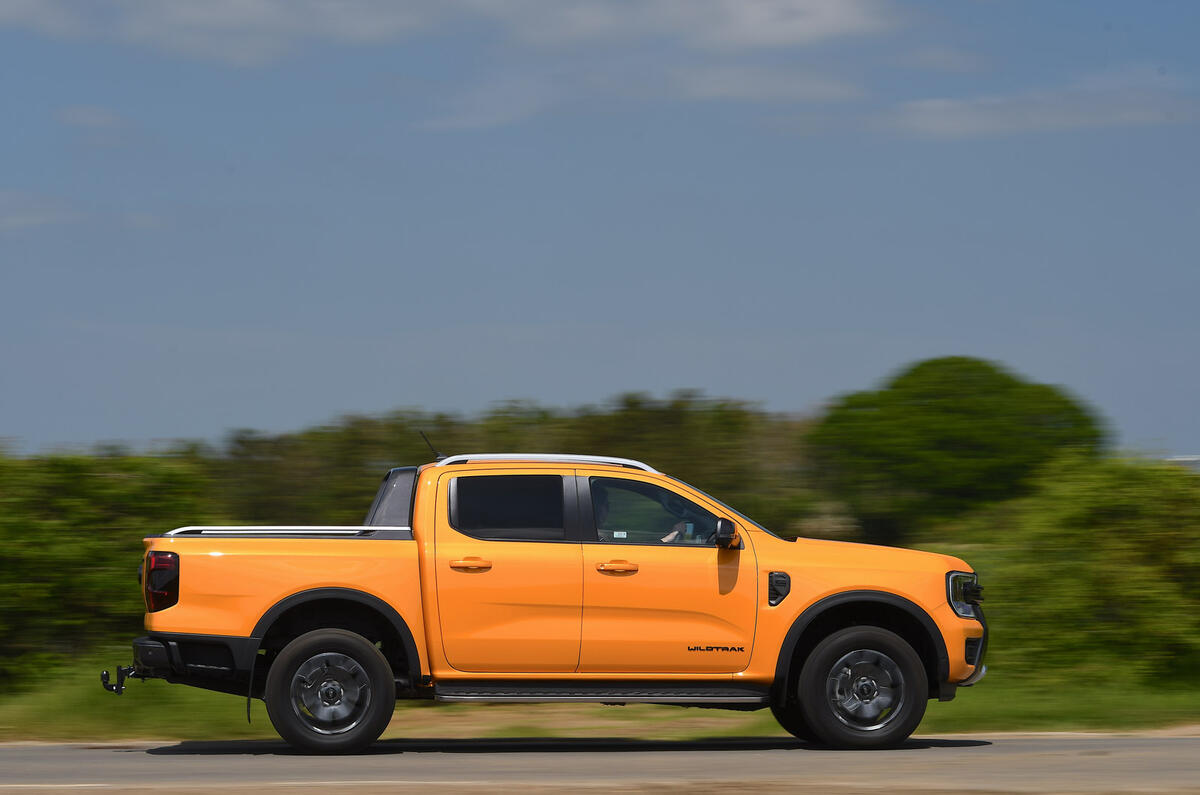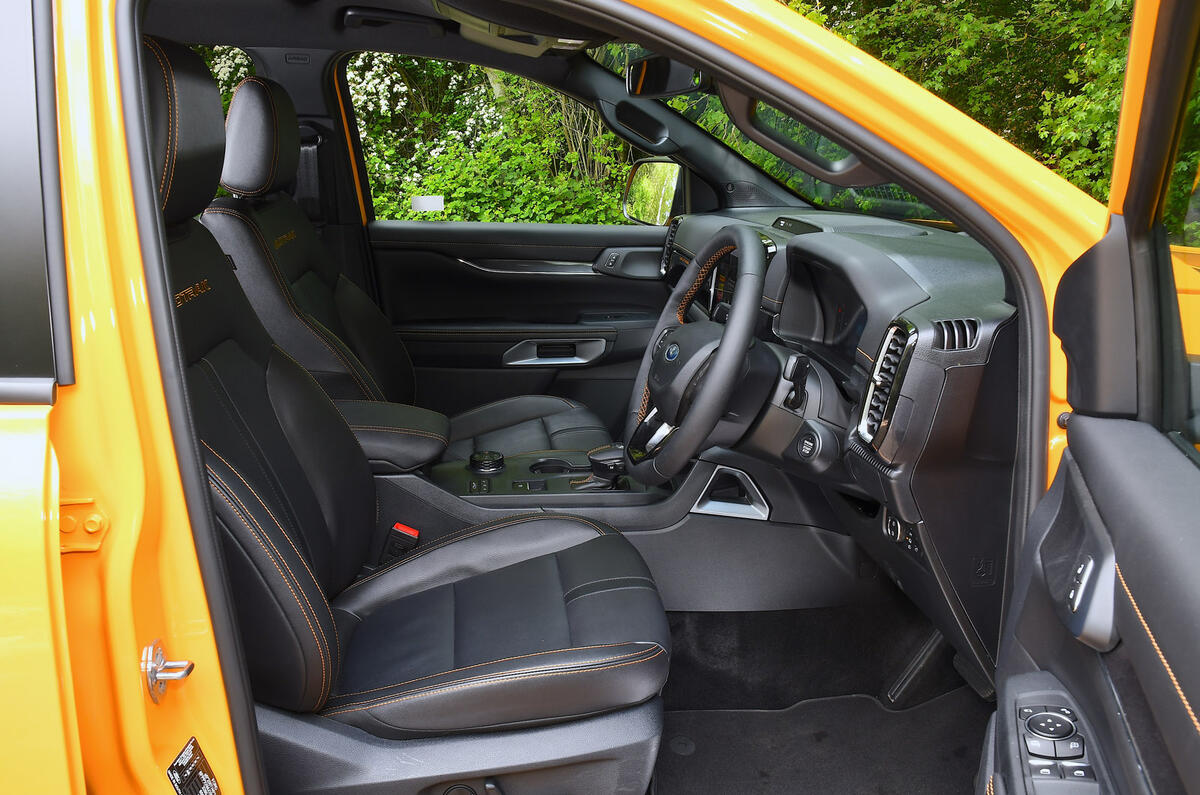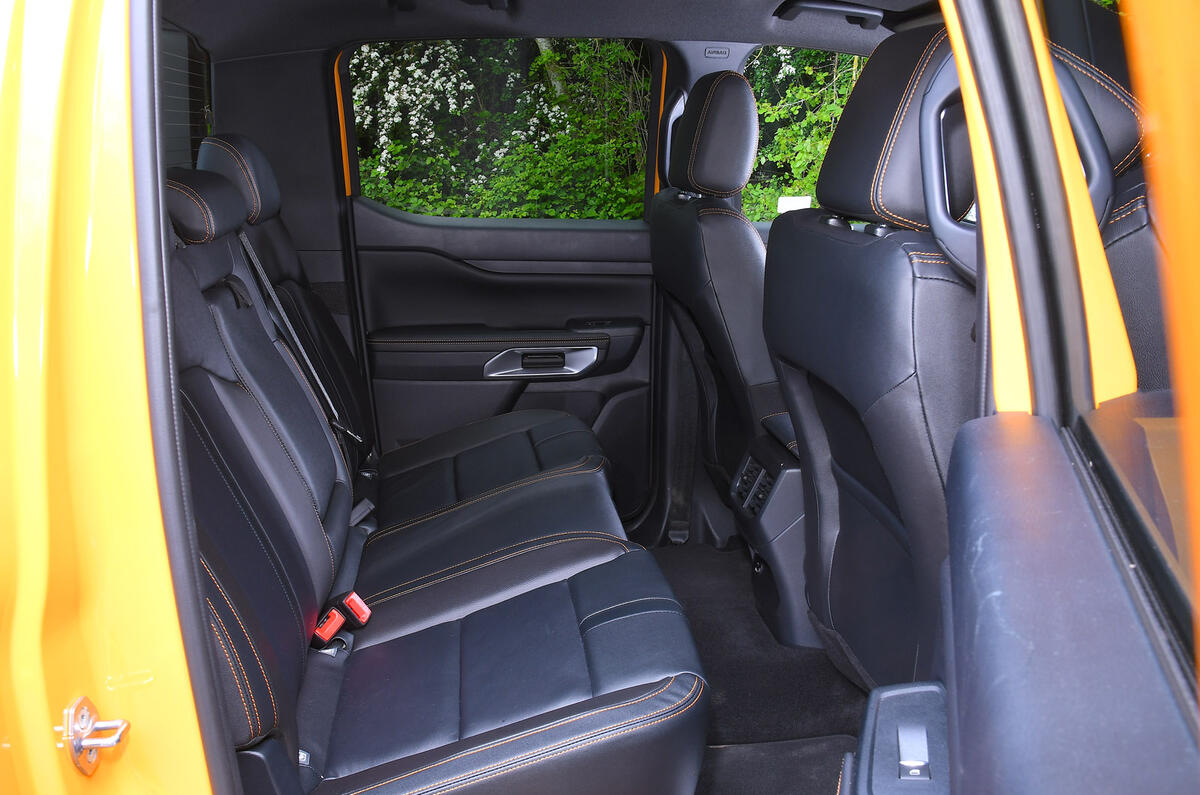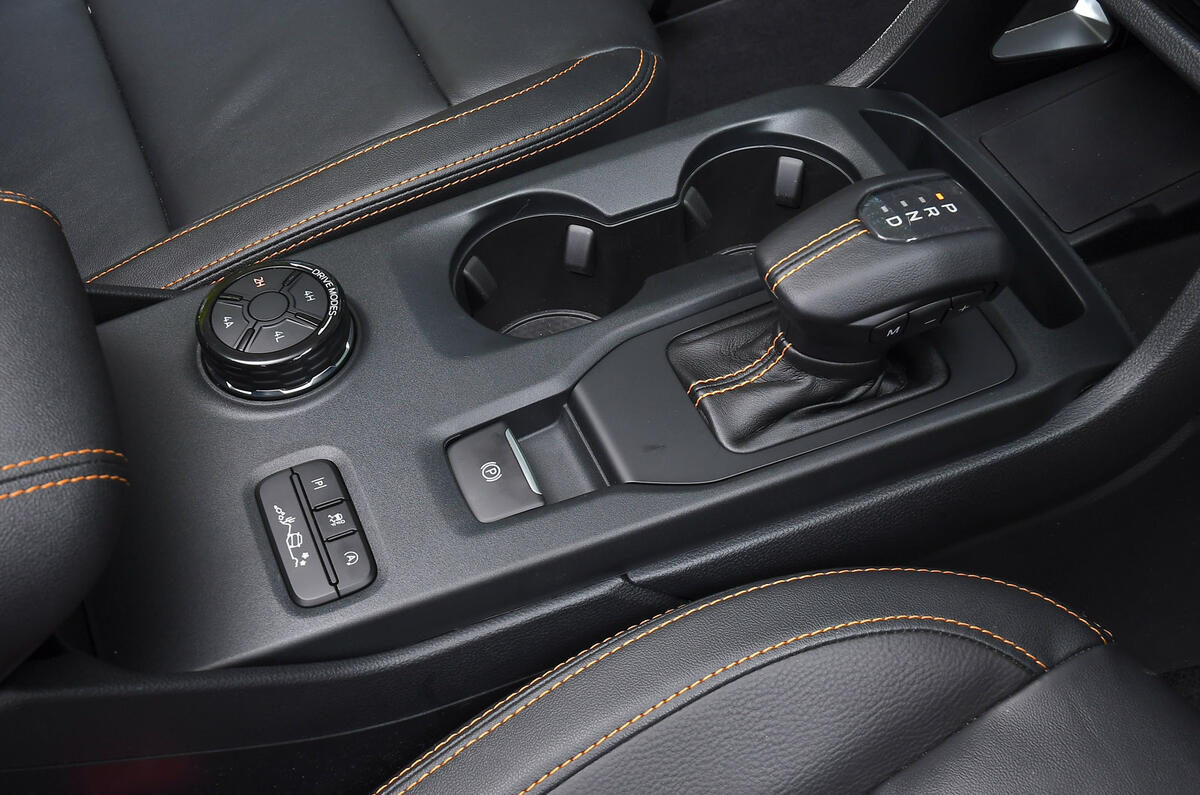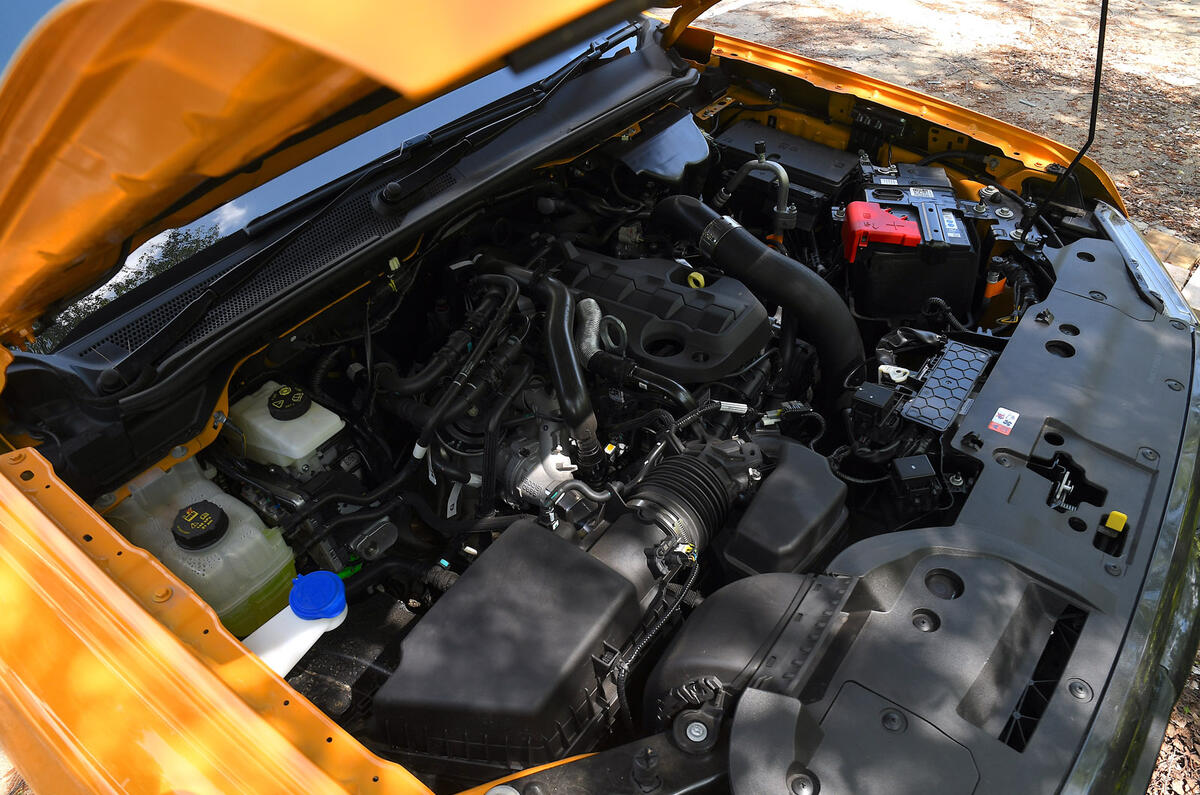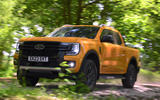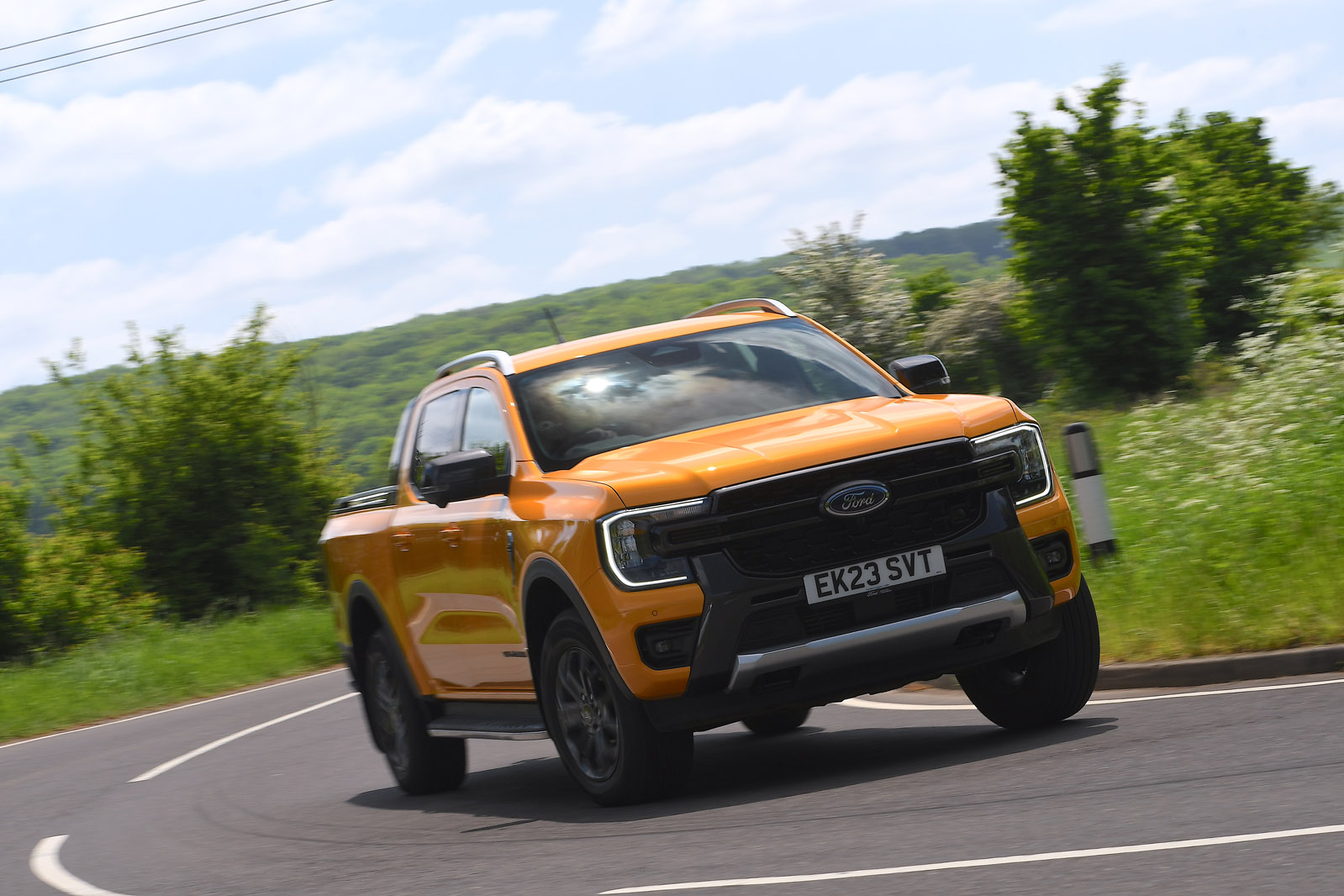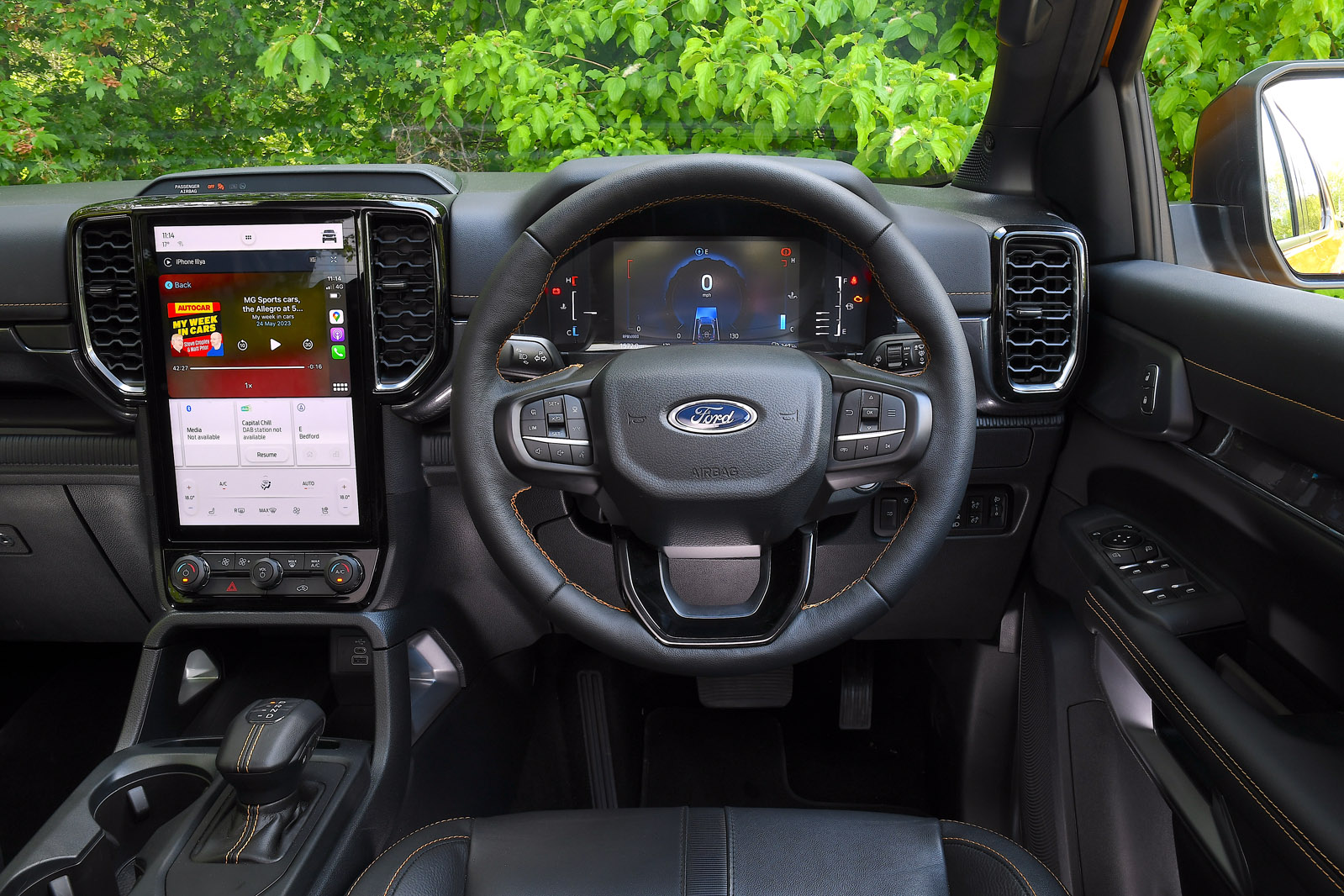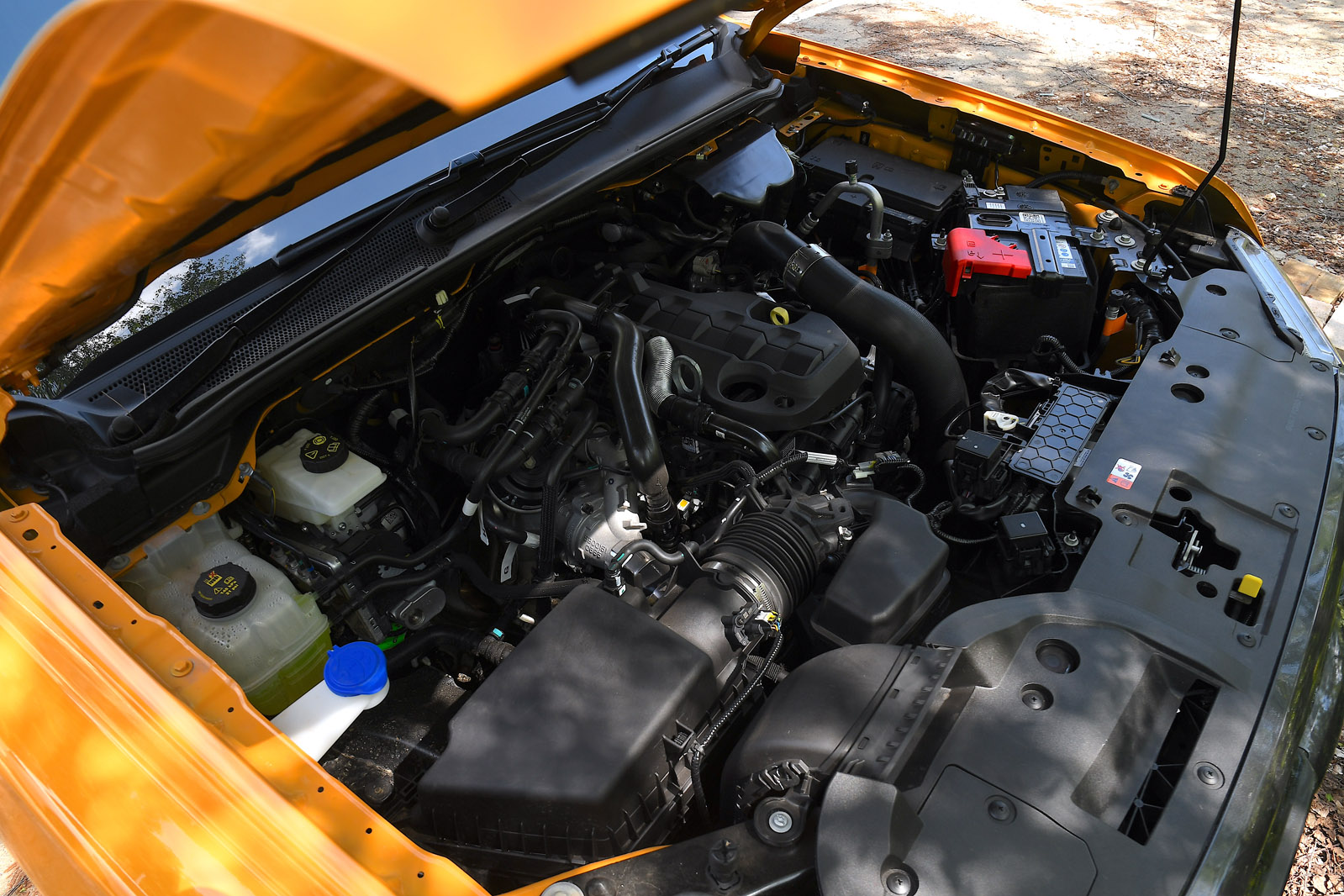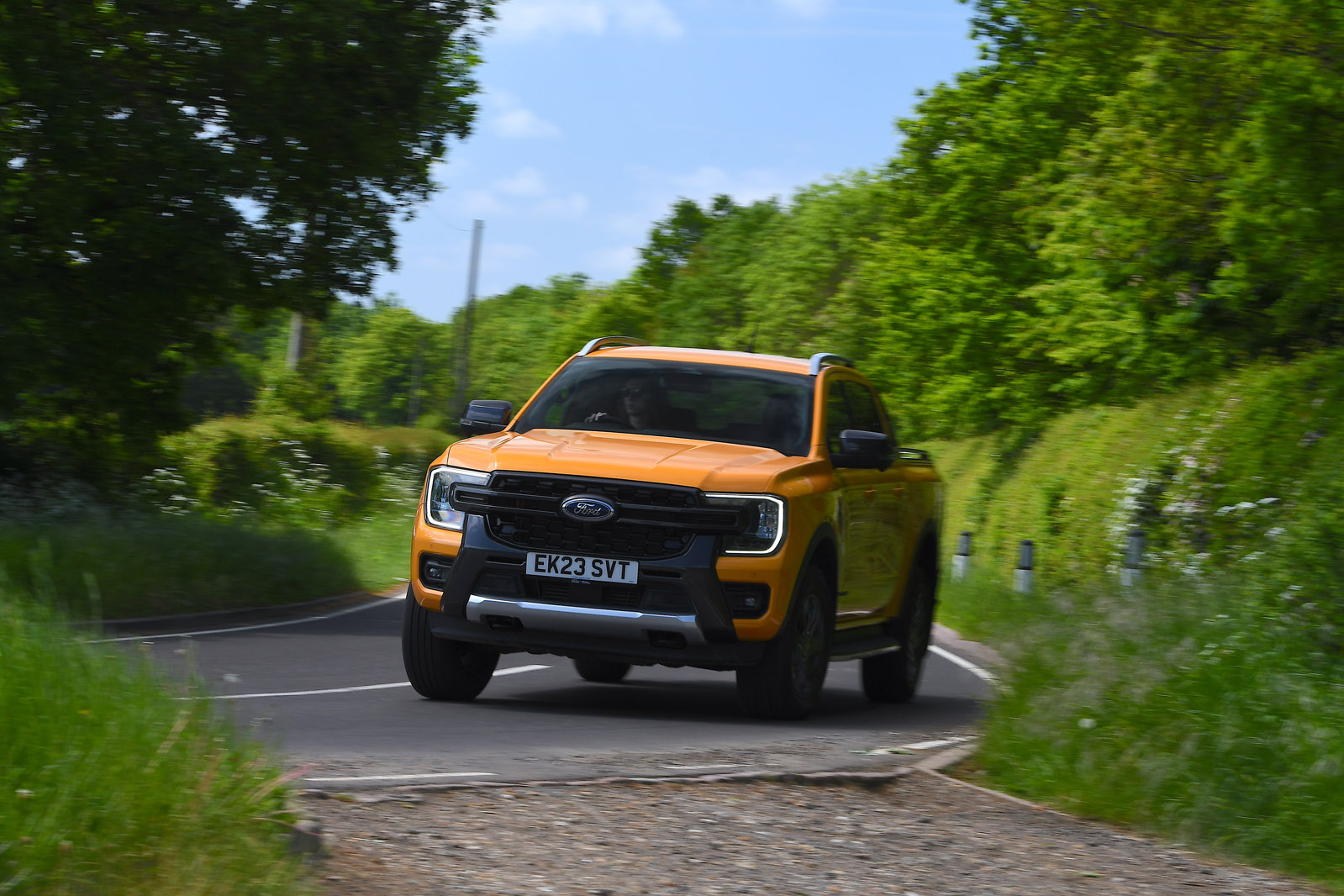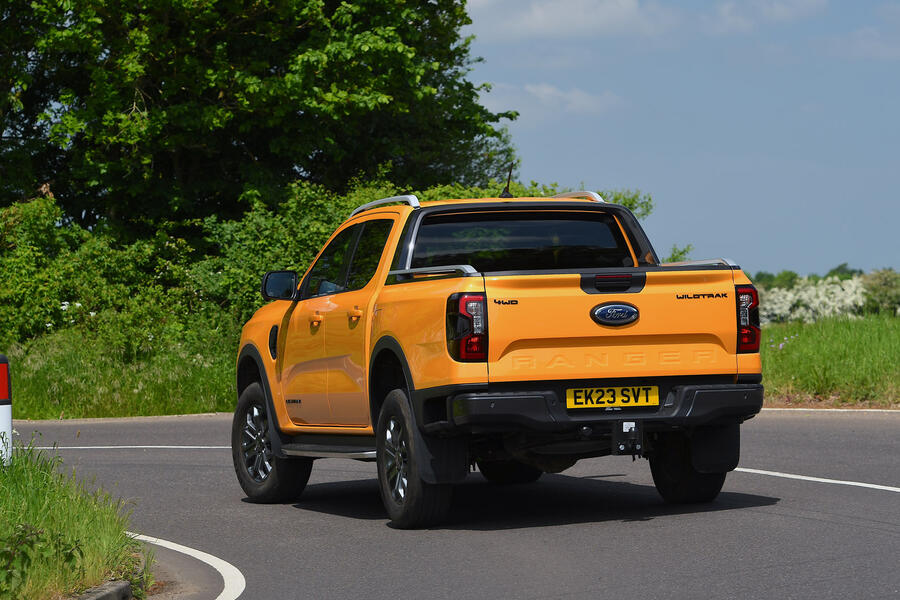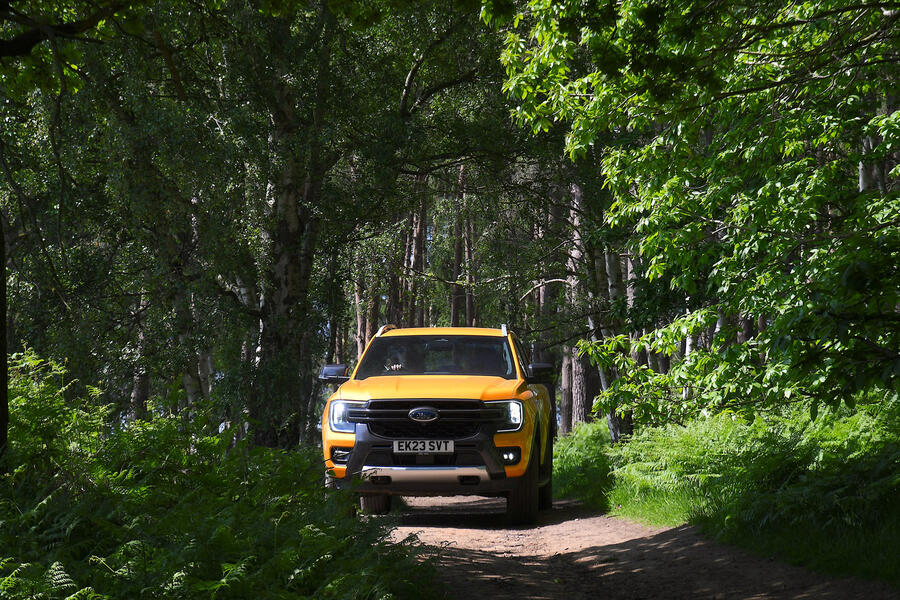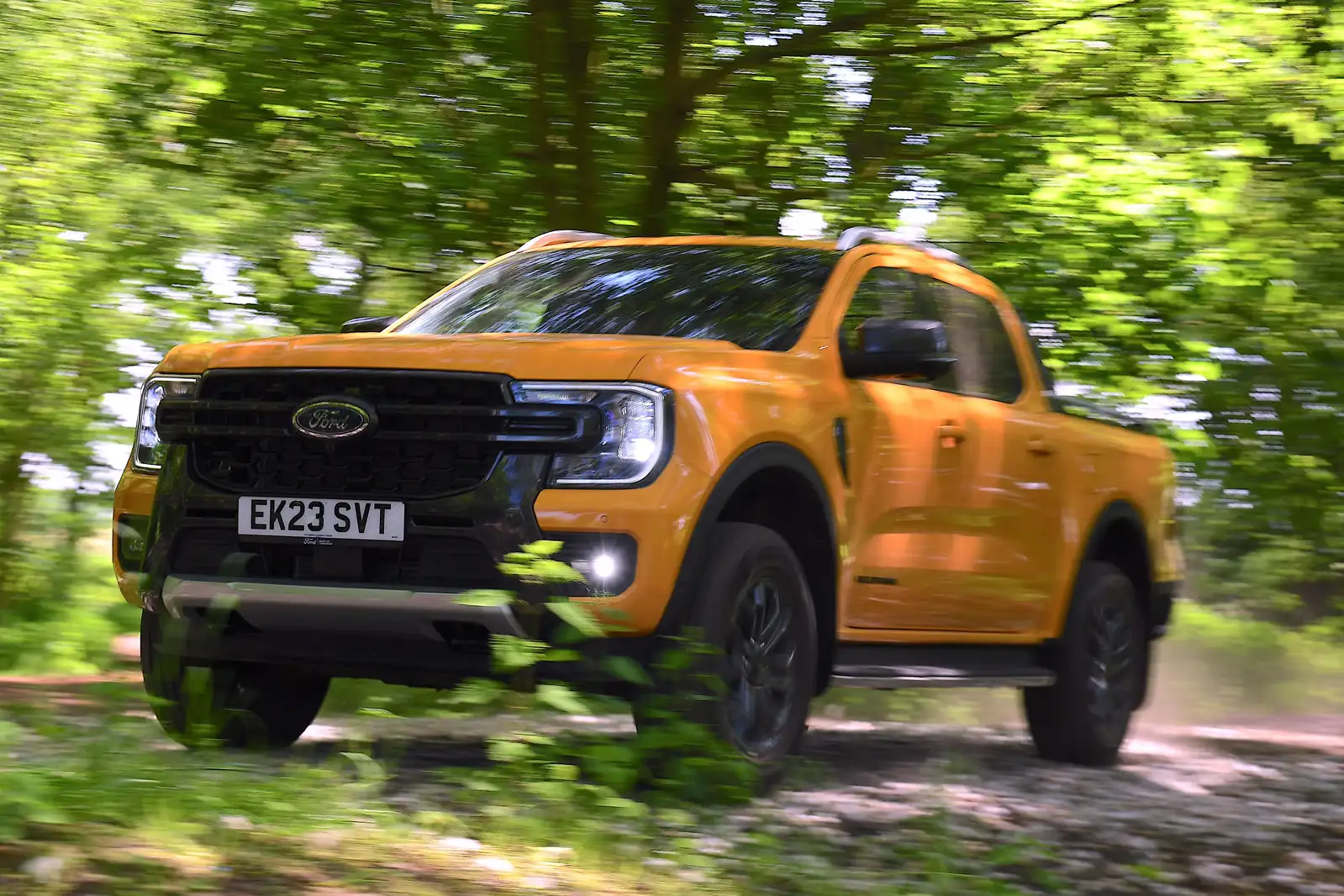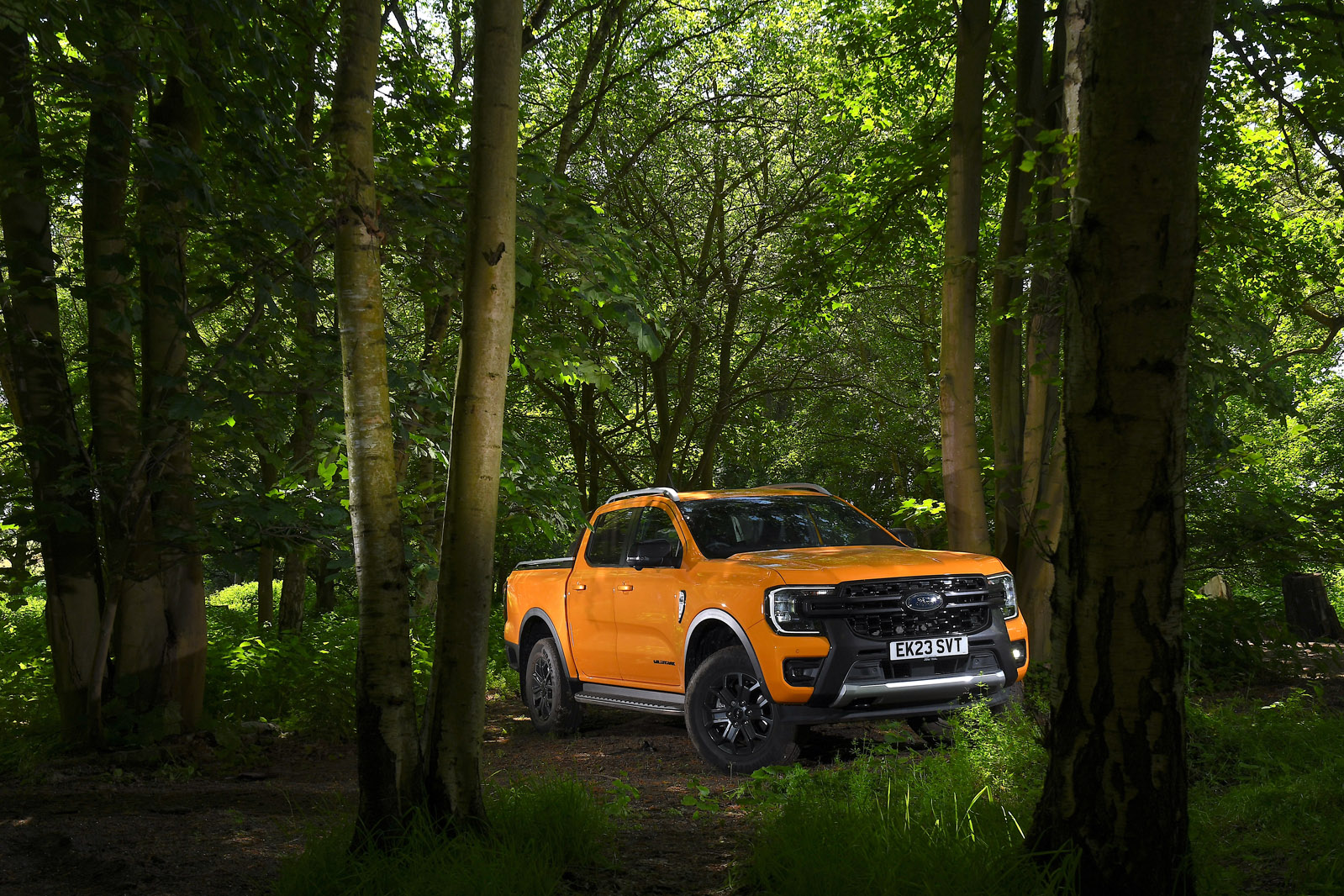When you hoist yourself into the cab of a pick-up truck (and unless you are exceptionally tall, you will be grateful for the handles on the A-pillars and the Wildtrak’s running boards), you expect to be greeted by a sea of black plastic. But in the Wildtrak, that is not the case.
Although the hard materials are there if you go looking for them, the tops of the dash and doors are padded with imitation leather, and there are pleasing design touches like the painted trim and chrome decoration around the air vents. You wouldn’t mistake this for a BMW interior, but it is an upgrade from a Ford Focus.
The experience is somewhat different in the lower trims. Choose XL or XLT and you will get the expected black plastic, and you lose the extra cubby on the passenger side (which feels unnecessarily mean). Then again, those hard-wearing materials might very well be preferred on a work vehicle, and everything still feels very solid. There's also a bit of padding on the part of the door you might rest an elbow.
The general design is the same on all Rangers, including the big screens. Lower trims get a 10.1in item, while Wildtrak and above gets a 12.0in one. The climate functions are permanently displayed at the bottom of the screen, and unlike the Amarok, all Rangers also get a bank of physical controls. On the topic of air conditioning, it is a £500 option on the Ranger XL.
The gauge cluster is digital too, even on the cheapest models, and the Raptor and upcoming Platinum gain a larger screen. It’s not the most configurable, but it’s clear enough and easy to navigate using the steering wheel buttons.
If you’re not used to modern pick-up trucks, the prospect of driving such a large vehicle might be daunting, but it’s remarkable how quickly one feels at home in the Ranger. The driver’s seat goes quite far down, but you actually want to set it fairly high for a commanding view out over the long flat bonnet.
The square corners and straight sides of the body, and the huge side mirrors and fairly thin pillars, ensure excellent visibility, making this a surprisingly easy vehicle to place on the road. The way you look down on most SUVs reinforces the imperious feel.
With as much length as possible going to the load bay, the rear leg room is only similar to what you will find in a family hatchback, but the flat roof and vertical rear window mean that head room is pretty generous. This is all typical for a double-cab pick-up, and the Ranger is even slightly roomier than the Toyota Hilux. The seat base can be flipped up to reveal a few cubbies that hold the toolkit and jack, or the back rest can be folded down to create a shelf for storage.
That brings us to the most important part of a pick-up truck: the bed. All versions of the Ranger apart from the Raptor have a payload of at least one tonne, ranging from 1035kg for a 2.0-litre 202bhp Wildtrak X to 1207kg for a single-cab XL. Being wider than before also means the bed fits a Euro pallet, like the Ranger’s rivals.
All Rangers have various hooks and tie-down points along the bed. The sides are topped with plastic to protect the paint, while little flaps hide further mounting points. Ford has a lengthy list of accessories including rack systems, divider systems and hard tops, and if that’s not enough, there are plenty of aftermarket suppliers that produce additional kit.
Our car had the spray-in bed liner and the powered shutter, which worked very well. The torsion bars for the tailgate are a useful standard feature, making it nice and light to open and close.
Multimedia system
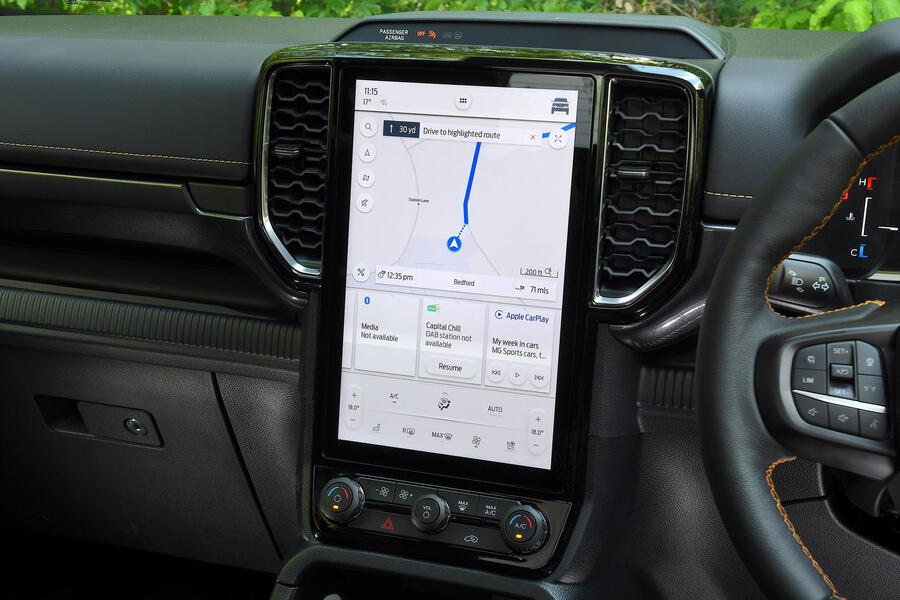
All Rangers run Ford’s latest infotainment software, Sync 4, on a large portrait touchscreen. The screen is completely vertical and positioned fairly low compared with your eyeline. That makes it less distracting on the move, but also means the viewing angle is less than ideal.
